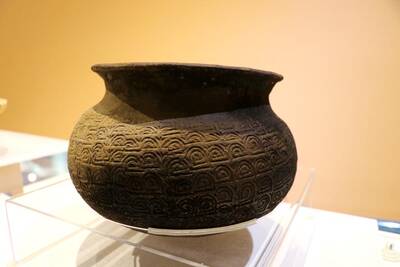Neil Marshall has honed a reputation as a champion of British horror with classics such as Dog Soldiers (2002) and The Descent (2005), but his attempt to bring his bloody aesthetic to a larger canvass has produced a historical splatter movie of dubious appeal and limited interest.
The story takes as its starting point an attempt by the Roman empire to complete its conquest of Britain. This has been held up in the barbarous wilds of Scotland by Pictish warriors who engage in a guerrilla campaign of great cunning and savagery. The story is loosely based upon the destruction and disappearance of the Legio IX Hispana, one of Rome’s most ruthlessly efficient fighting units that suddenly disappeared from the historical record in mysterious circumstances in the early part of the second century.
Quintus Dias (Michael Fassbender) is an officer stationed at a bleak and frozen frontier post who is captured by the Picts but manages to escape after meeting up with a Roman column (the 9th Legion) that is marching to destroy Pict resistance. He is welcomed as a source of local knowledge by the general Virilus (Dominic West), a fighting general eager to come to grips with his adversary.
The column is led into an ambush and cut down almost to a man. A few survivors remain, and the film follows seven of them, led by Dias, who try to escape through the wilderness. Hard on their heels is Etain, played by Quantum of Solace Bond girl Olga Kurylenko, who is out for vengeance for atrocities committed by the Roman army in her village. She sports what might be described as a folk-punk look, and is accompanied by other leggy woman warriors, who are doubtless there to cater to Marshall’s core audience of young men, but seem a highly improbable addition to a Highland fighting force.
A strong cast that includes Michael Fassbender and Dominic West has plenty of potential to take the film into a more nuanced look at violent men under pressure, but Marshall has commercial interests at the forefront of his mind. There is gory butchery aplenty as Etain and her posse take out the Romans one at a time, and the film degenerates rapidly into a not very exciting escape movie. Copious attention is paid to creating some decent fight sequences, but the characters are too hastily drawn for us to feel much interest in their demise. The backdrop of wild Highland scenery, while undoubtedly beautiful, fails to generate the atmosphere of brooding foreboding that Marshall is trying for.
Centurion is further tarnished by a romantic interlude that brings in yet another bit of eye candy in the form of Arian (Imogen Poots), a woman living alone in the depths of the forest having been ostracized by the Picts for witchcraft. It’s all a bit too convenient. The romance between Dias and Arian manages to blossom in a matter of seconds and just paves the way to wrap up the story with a sweet little bow.
Centurion has the same gore mixed with laddish humor as Dog Soldiers, which was a minor classic of new British horror, and Marshall is now covering similar ground with bigger names and bigger sets, but the humor has gone sour and the director’s competence with spilled guts and decapitated heads is not enough in itself to make this film work.

Sept. 1 to Sept. 7 In 1899, Kozaburo Hirai became the first documented Japanese to wed a Taiwanese under colonial rule. The soldier was partly motivated by the government’s policy of assimilating the Taiwanese population through intermarriage. While his friends and family disapproved and even mocked him, the marriage endured. By 1930, when his story appeared in Tales of Virtuous Deeds in Taiwan, Hirai had settled in his wife’s rural Changhua hometown, farming the land and integrating into local society. Similarly, Aiko Fujii, who married into the prominent Wufeng Lin Family (霧峰林家) in 1927, quickly learned Hoklo (commonly known as Taiwanese) and

The low voter turnout for the referendum on Aug. 23 shows that many Taiwanese are apathetic about nuclear energy, but there are long-term energy stakes involved that the public needs to grasp Taiwan faces an energy trilemma: soaring AI-driven demand, pressure to cut carbon and reliance on fragile fuel imports. But the nuclear referendum on Aug. 23 showed how little this registered with voters, many of whom neither see the long game nor grasp the stakes. Volunteer referendum worker Vivian Chen (陳薇安) put it bluntly: “I’ve seen many people asking what they’re voting for when they arrive to vote. They cast their vote without even doing any research.” Imagine Taiwanese voters invited to a poker table. The bet looked simple — yes or no — yet most never showed. More than two-thirds of those

In the run-up to the referendum on re-opening Pingtung County’s Ma-anshan Nuclear Power Plant last month, the media inundated us with explainers. A favorite factoid of the international media, endlessly recycled, was that Taiwan has no energy reserves for a blockade, thus necessitating re-opening the nuclear plants. As presented by the Chinese-language CommonWealth Magazine, it runs: “According to the US Department of Commerce International Trade Administration, 97.73 percent of Taiwan’s energy is imported, and estimates are that Taiwan has only 11 days of reserves available in the event of a blockade.” This factoid is not an outright lie — that

The People’s Republic of China (PRC) yesterday paraded its military hardware in an effort to impress its own population, intimidate its enemies and rewrite history. As always, this was paced by a blizzard of articles and commentaries in the media, a reminder that Beijing’s lies must be accompanied by a bodyguard of lies. A typical example is this piece by Zheng Wang (汪錚) of Seton Hall in the Diplomat. “In Taiwan, 2025 also marks 80 years since the island’s return to China at the end of the war — a historical milestone largely omitted in official commemorations.” The reason for its